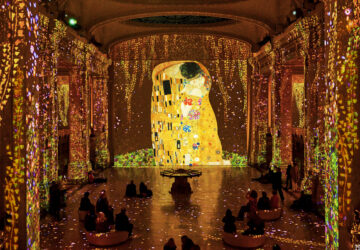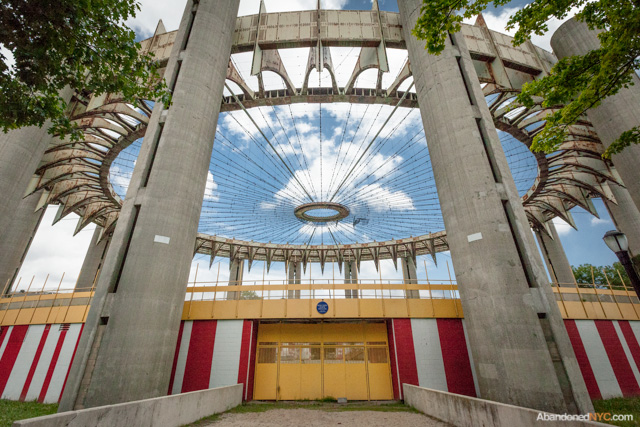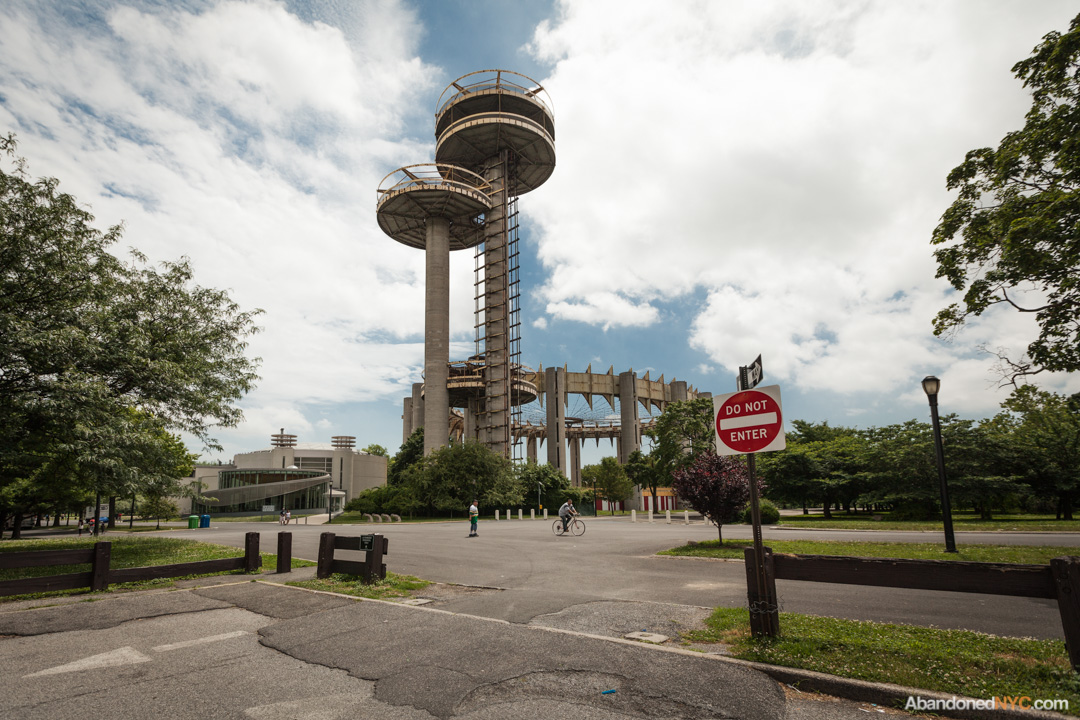 The empty observation towers of the New York Pavilion hover over Flushing Meadows-Corona Park
The empty observation towers of the New York Pavilion hover over Flushing Meadows-Corona Park
In Flushing Meadows-Corona Park, the oddball ruins of the “Tent of Tomorrow” are fading into yesterday. This land had been home to the Corona Ash Dumps—immortalized as the “valley of ashes” in The Great Gatsby—until master builder Robert Moses set out to transform the area by selecting it as the site of the 1939 New York World’s Fair. While the overall design of the park was laid out for the ’39 event, its most evident landmarks date back to the ’64 exhibition. The Space Age design of the New York Pavilion was intended to inspire visitors with the promise of the future, but today it serves to firmly plant the structure in the context of the 1960s.
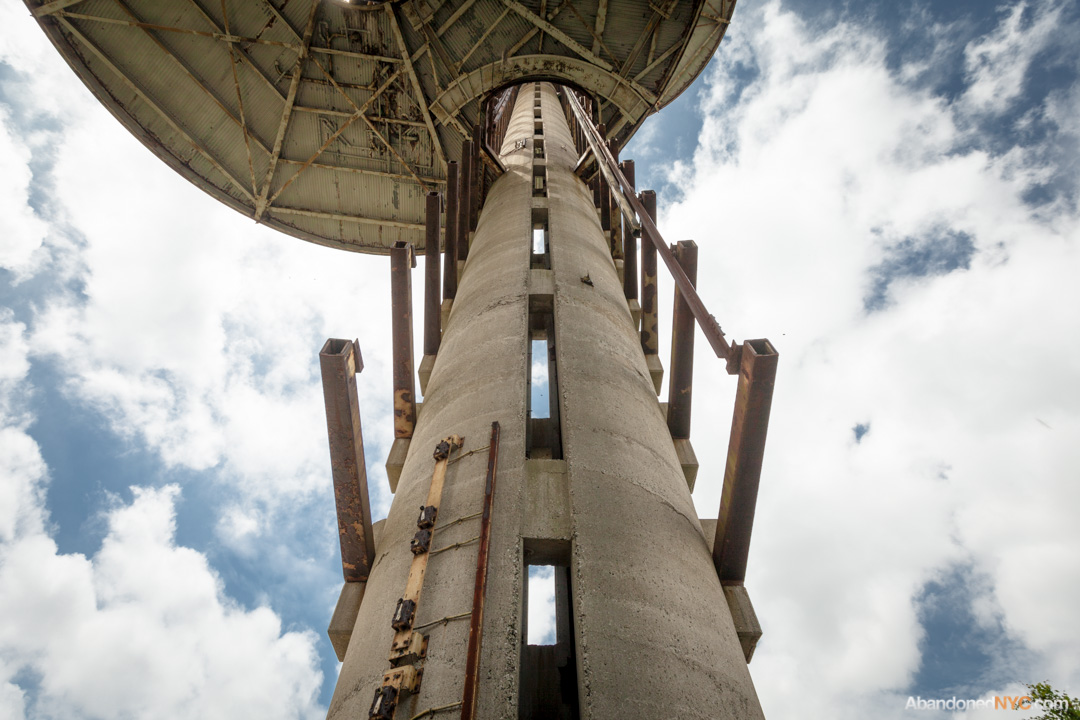 The tallest tower was the highest point in the fair at 226 feet.
The tallest tower was the highest point in the fair at 226 feet.
Concieved by New York businessmen and funded by private financing, the 1964-65 New York World’s Fair was once again headed by Robert Moses, who saw the project as an opportunity to complete his vision for Flushing Meadows Park. In order to make the fair financially feasible, organizers charged rent to exhibitors and ran the attraction for two years, ignoring the regulations of the Bureau of International Expositions. As a result, the BIE refused to sanction the fair and instructed its forty member nations not to participate, which included Canada, most of the European nations, Australia, and the Soviet Union.
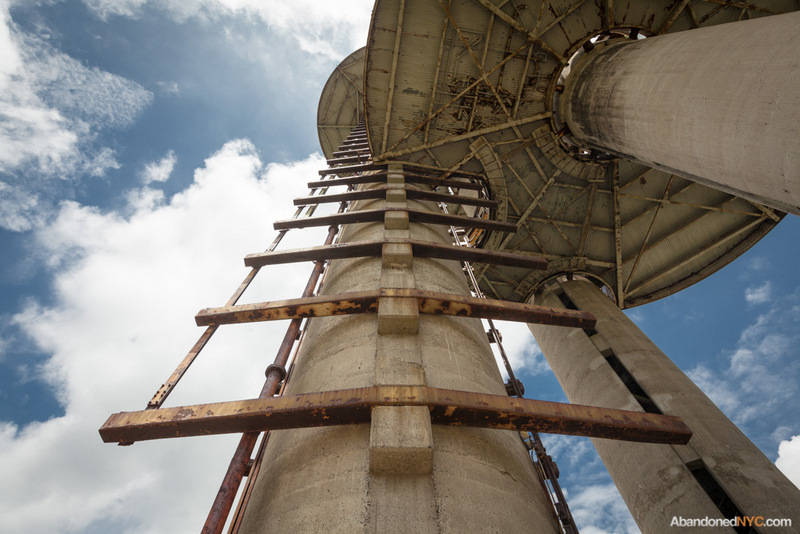 Faint remnants of bright yellow paint can still be spotted on the metal components of the structure
Faint remnants of bright yellow paint can still be spotted on the metal components of the structure
The fair was dedicated to “Man’s Achievement on a Shrinking Globe in an Expanding Universe,” but the majority of exhibitors were American companies. Some of the most popular destinations included General Motors’ “Futurama” exhibit, Disney’s original “It’s A Small World” attraction, and a model panorama of New York City (which you can still visit at the Queens Museum of Art). Although over 51 million people attended the fair, the turnout was far less than expected. The project ended in financial failure, returning only 20 cents on the dollar to bond investors.
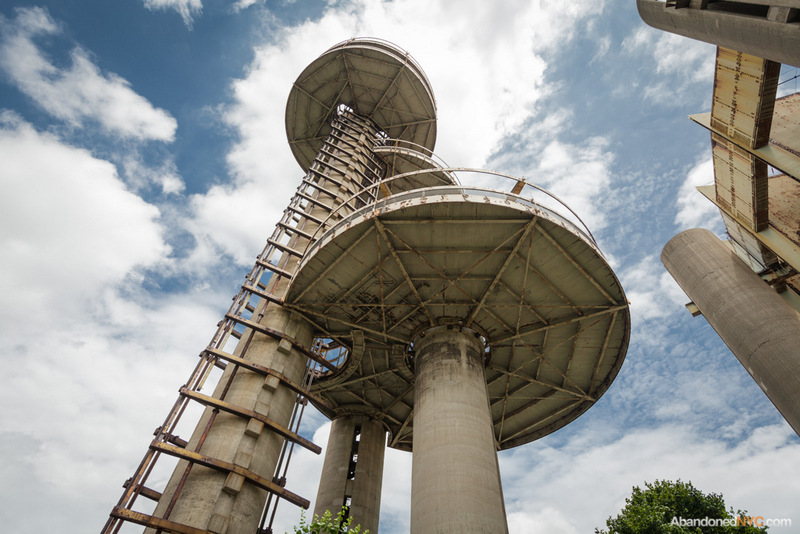 The observation decks were re-imagined as spaceships in the original Men In Black film
The observation decks were re-imagined as spaceships in the original Men In Black film
Most of the World’s Fair pavilions were temporary constructions that were demolished within six months of closing, but a few were deemed worthy of becoming permanent fixtures of the park. Once the centerpiece of the fair, the 12-story high stainless steel Unisphere has gone on to become a widely recognized symbol of Queens. Designed by notable modernist architect Philip Johnson, the nearby observation towers and the “Tent of Tomorrow” remain striking examples of the futurist architecture the fair embraced. Unfortunately, they’ve sat empty for decades, and are starting to show their age. In the Tent of Tomorrow, space that once hosted live concerts and exciting demonstrations are occupied by stray cats and unsettling numbers of raccoons.
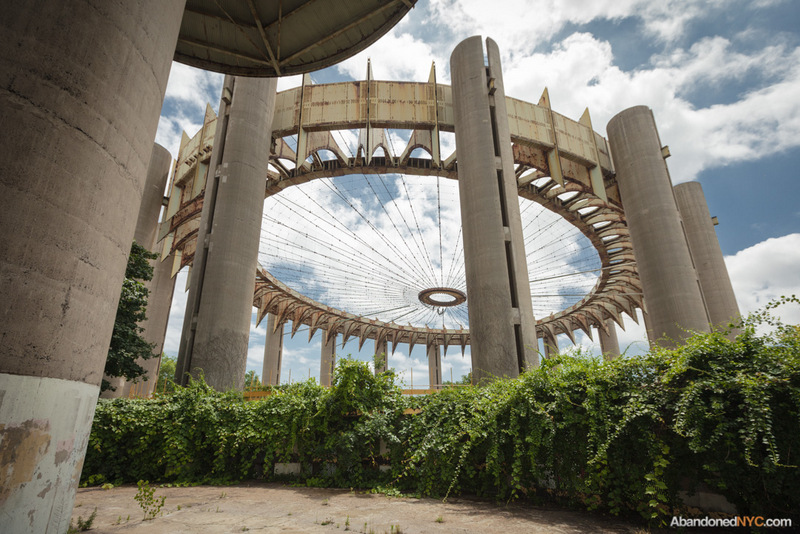 The Tent of Tomorrow once held the record as the largest cable suspension roof in the world
The Tent of Tomorrow once held the record as the largest cable suspension roof in the world
The pavilion was reopened as the “Roller Round Skating Rink” in 1970, but roof tiles soon became unstable and the city ordered the attraction to close by 1974. Owing to their singular design, the structures have found their way into the background of many feature films, television shows, and music videos, including a memorable turn as a location and plot element for the original Men in Black. You can still make out the design of the pavilion’s main floor—modeled after a New York state highway map—in this late ’80s They Might Be Giants video.
The New York State Pavilion was listed on the National Register of Historic Places in 2009, and a group of preservationists have helped clean up the exterior, restoring a bit of the original color scheme. As we near the 50th anniversary of the ’64 World’s Fair, here’s hoping something can be done to put these unique structures back to use.
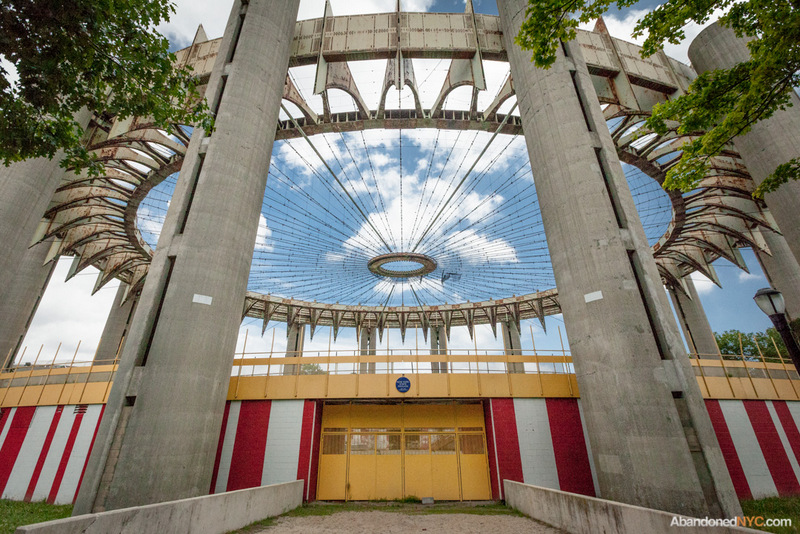 A group of preservationists have restored the original paint job on the structure’s exterior
A group of preservationists have restored the original paint job on the structure’s exterior
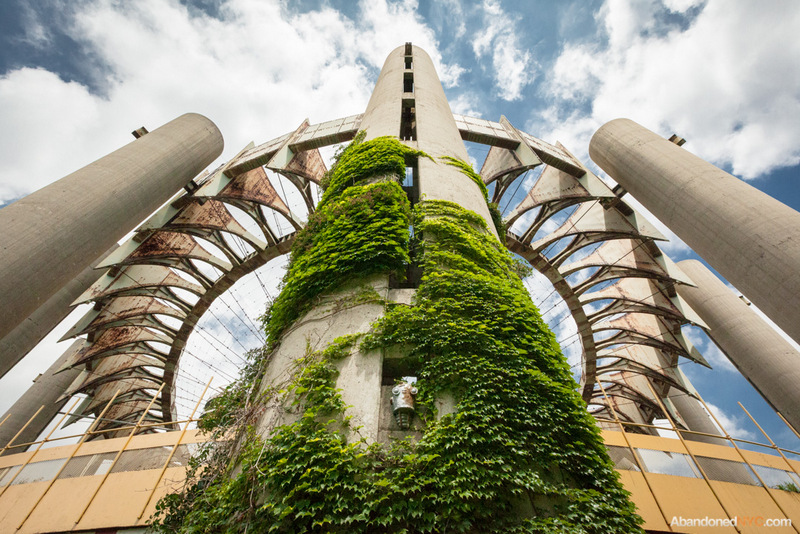 Vines, and a not entirely incongruous robot head, have been affixed to this tower
Vines, and a not entirely incongruous robot head, have been affixed to this tower
Take a behind-the-scenes look into the abandoned viewing platforms at the World’s Fair and a rare look inside the Tent of Tomorrow.
See vintage photos from the 1964 World’s Fair. For more photos and the history of New York’s abandoned places, check out Will’s blog, Abandoned NYC, and follow the project on Facebook for more updates.



